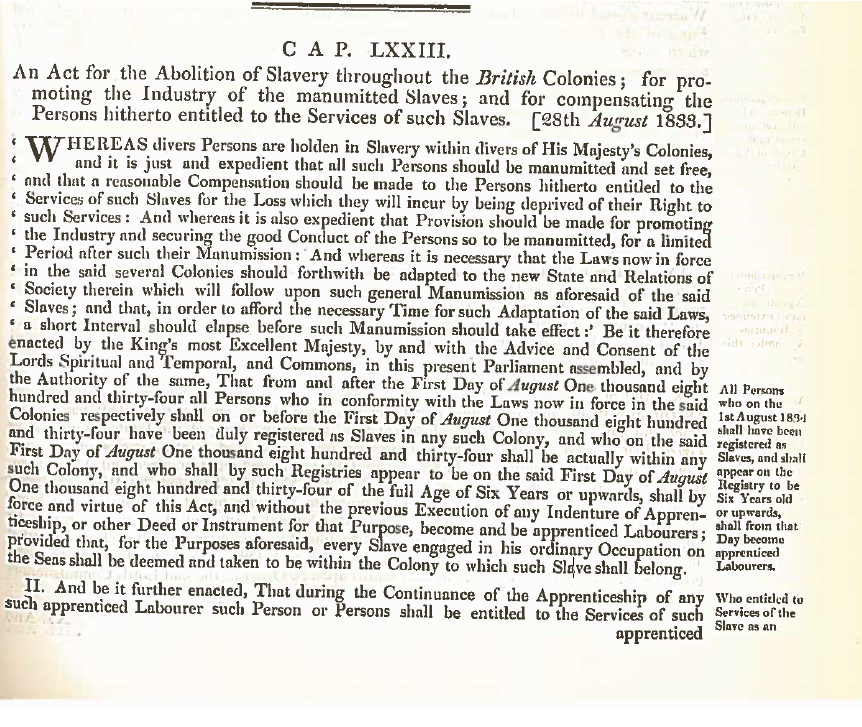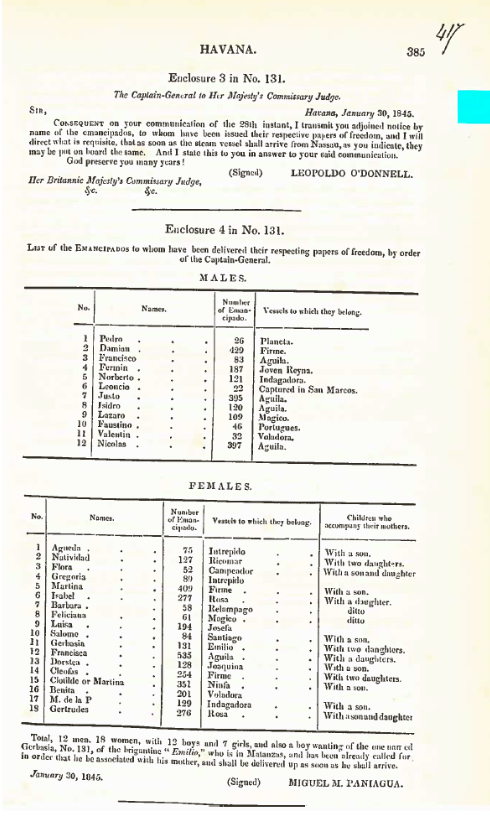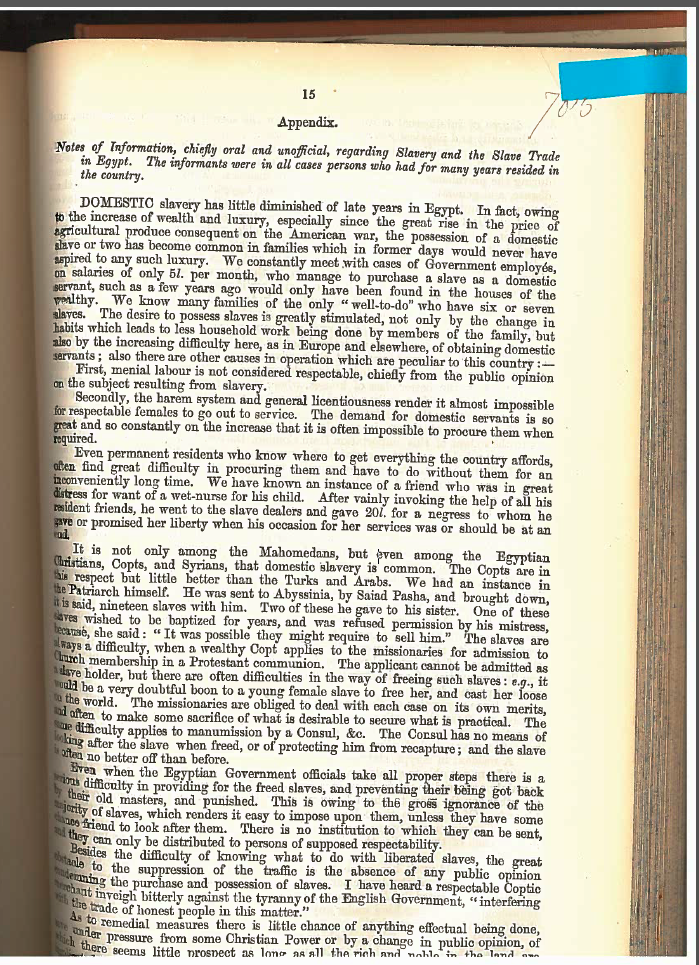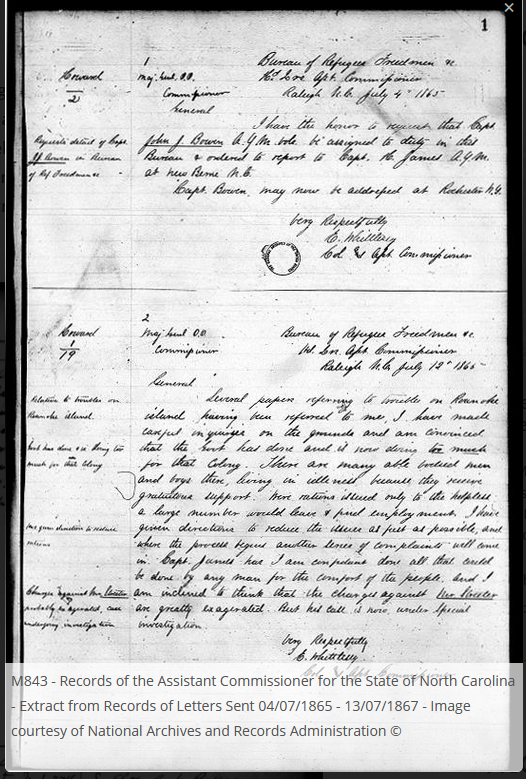Black History Month: Library resources for the history of slavery
To mark Black History Month we will be showcasing some key sources in the display area, situated in the ground floor of the McClay Library. Our aim is to highlight library resources and primary sources that may be of interest to students and to promote research in these areas.

In a week when Diane Abbott made history as the first black MP to lead their party at Prime Minister’s Questions despatch box in the House of Commons, it is fitting that we begin our survey with parliamentary papers.
The satisfaction for the researcher working with primary sources is in a large part due to mining historical sources to reveal information for which the original source was not intended. Nowhere is this clearer than in parliamentary papers recording Britain’s contribution to the transatlantic slave trade.
Forms of slavery were practiced in Britain and its colonies for around 200 years. Although not the only country involved, Britain in particular turned the trade into a profitable business, with British ships carrying more Africans than any other maritime nation.[i]
Statute law and Sessional Papers of the British House of Commons are a useful source for the study of slavery and the slave trade. These are available online via ProQuest Parliamentary papers, accessible via the Library Catalogue. Printed subject Indexes compiled for Parliament also remain an important starting point for the historian of slavery offering as they do a sense of the timelines of events, and of how these sources sit in the context of parliamentary business.[ii]
These papers provide a valuable insight into the structure of slavery in the eighteenth and nineteenth century. The detailing of administration of legislation in this area necessitated the listing of ships movements and contents – including what was then regarded as human cargo, as well as statistical information on different aspects of British commerce and the structure of trade relations between Britain and its colonies.
Object no. 1 (see left side drawer 4):
1833 An act for the abolition of slavery throughout the British Colonies; for promoting the industry of the manumitted slaves; and for compensating the persons hitherto entitled to the services of such slaves.[iii]

This Act officially abolished slavery in the British Empire from 1834 onwards. It followed on from the Slave Trade Acts of 1807 and 1824 which outlawed the slave trade in the British colonies, but became clear in the years between these Acts that the slave trade could not be halted and further measures were necessary.
As with any historical statute, it is crucial to go back to the original source and read the content. As this statute makes clear, dismantling slavery in the British Empire was to be a long drawn out process. There are several points of particular note: only slaves under the age of six years old were freed. Anyone over the age of six was required to serve out a period of time as an apprentice. The nature of these apprenticeships and the time served was determined by slaves’ former owners. Former slave-owners also had the right to be compensated for the loss of their property. The amount set aside for this at time was “the sum of twenty million pounds sterling”, which totalled 40% of the government’s total annual expenditure at the time.[iv] This Act remained on the Statute books until it was repealed in 1998.
Although the Slave Trade was outlawed in 1807 and slavery was officially abolished in 1834, the latter Act only ended slavery in the Caribbean and not the rest of the British Empire and so Britain’s involvement in slavery lasted well into the nineteenth century. Even after slavery was officially abolished, forced labour and domestic slavery existed until well into the twentieth century.
Enclosure 4 in No. 131: List of Emancipados to whom have been delivered their respecting papers of freedom, by order of the Captain-General in Correspondence with the British Commissioners at Sierra Leone, Havana, Rio de Janeiro, Surinam, Cape of Good Hope, Jamaica, Loanda and Boa Vista relating to the slave trade From January 1 to December 31, 1845, inclusive. (London, 1846) p.417
Amidst official data we can sometimes get a glimpse of the people at the heart of this business. Our second object is a volume of the House of Commons sessional papers.
The 1846 session of parliament is an example of the administration of emancipation – and a wealth of information is recorded here over 28 volumes: activities undertaken with British Commissioners presented to the 1846 session of parliament include lists of emancipated slaves, lists of slaves who died before they could be freed, evidence of the continuing slave trade in Cuba and Brazil.
Of particular note here is a section outlining the plight of emancipadoes. The status of emancipados arose via a treaty in 1815 to prevent Portuguese subjects slave trading on the African coast. An additional treaty in 1817 created procedures for the employment of Africans found illegally on ships, who were then confiscated and employed as servants or free labourers with their freedom guaranteed after a maximum term of 14 years. Emancipados could be rented out to work in exchange for food and clothing – and in many cases were kept in defacto servitude for up to half a century.[v]
Enclosure 4 in No. 131 lists men, women and children freed from ships under the supervision of the Captain-General. Elsewhere in these volumes, the plight of “the unfortunate class known as emancipados” is outlined:

“This Winter has been extremely cold for this climate, and the condition of those emancipados who have been working on the railroads and public works has been described as very lamentable. Without having it in the interest of any one to look after their welfare, and tasked as they are to the utmost, the insufficiency of clothing, added to the insufficiency of food, must have occasioned greater mortality among them than among the slave population generally; and I am, therefore, fearful that every month which passes over, increases greatly the hardness of their lot.” [p.380]
Correspondence respecting Sir Bartle Frere’s Mission to the East Coast of Africa 1872-73 (London, 1873).
Sir (Henry) Bartle Edward Frere, first baronet (1815–1884) was a colonial governor who worked on two missions abroad to curb the Zanzibar slave trade (November 1872–June 1873).[vi] His mission to Zanzibar, the focus of this third object, has been well documented. [vii]
Amidst the details of his consultations in this region we can also find examples of how the language of slavery had evolved in the nineteenth century to refer to certain types of work regarded as ‘inferior’. ‘Metaphors of slavery’ are evident in accounts of attitudes to what was regarded as inferior household work for lower and middle class women.[viii]

In his report presented to Parliament in 1873, Frere, records:
“A resident in Egypt states:
..Household work has come to be looked upon as degradation. I have seen hundreds of girls of the lower and middle classes passing through the female schools maintained or visited by Europeans, but not one of them would undertake for hire, household work of any kind under any consideration. They would say, “Am I a slave that I should do such work?”
It is this discredit of honest labour which is the great social obstacle to any growth of a class of free workers which could supersede slave labour.” (P.786)
Other items on display represent two further collections of note for the researcher in the history of slavery:
The Smith Collection (MS54)

These papers, housed in Special Collections in the McClay Library, include a collection of legal and business documents relating to the Smith family of Alleghany County, Virginia in the mid-nineteenth century. The documents include account statements, inventories and some letters and offer interesting insight into the family’s involvement in the slave trade. The Smiths appear to have hired slaves out and the collection includes documents relating to this activity. In her will Jennet Smith bequeaths a “negro” called George to her nephew. A listing of the collection can be found on our manuscript webpages.

Freedman’s Bureau Records (BRFAL). Records of the Assistant Commissioner for the State of South Carolina (M1910) is a microfilm collection also held in Special Collections
The Freedmen’s Bureau, formally known as the Bureau of Refugees, Freedmen and Abandoned Lands, was established in 1865 by Congress to help millions of former black slaves and poor whites in the South in the aftermath of the Civil War. Despite their new legal status, these newly freed citizens faced contempt, poverty and violence in a social structure that regarded them as inferior. It was the job of this new bureau to protect the freedmen’s political and economic rights.[ix] Although the bureau ultimately failed in this objective, the records are a rich source for the experience of African American life in the post-Civil War and Reconstruction eras, including documents such as letters, labour contracts, lists of food rations issued, indentures of apprenticeship, marriage and hospital registers and census lists.[x]

The microfilm copies of the Freedmen’s Bureau Records were donated to Special Collections and Archives by Dr Brian Kelly, following his work on a large scale research project “Aftr Slavery: Race, Labor , and Politics in the Post Emancipation Carolinas“
[i] The history of how parliament shaped the transatlantic slave trade, and the public campaign to finally abolish the British slave trade in 1807, is well documented at https://www.parliament.uk/slavetrade
[ii] Bellot, Hugh H., “Parliamentary Printing, 1660-1837, ” Bulletin of the Institute of Historical Research 11 (1933-1934), 85–98 ; Lambert, Sheila, “Guides to Parliamentary Printing, 1696-1834, ” Bulletin of the Institute of Historical Research 38 (1965), 111–117.
[iii] 3 & 4 Will.4 c.73
[iv] HM Treasure, Freedom of Information Act 2000: Slavery Abolition Act. Available online at: https://assets.publishing.service.gov.uk/government/uploads/system/uploads/attachment_data/file/680456/FOI2018-00186_-_Slavery_Abolition_Act_1833_-_pdf_for_disclosure_log__003_.pdf (Accessed 01/10/2019)
[v] Conrad, Robert. “Neither Slave nor Free: The Emancipados of Brazil, 1818-1868.” The Hispanic American Historical Review 53, no. 1 (1973): 50-70. doi:10.2307/2512522 ; Lovejoy, Henry B. “The registers of liberated Africans of the Havana Slave Trade Commission: transcription methodology and statistical analysis” African Economic History 38 (2010): 107-35. http://www.jstor.org/stable/41756133
[vi] Benyon, J. (2008, January 03). Frere, Sir (Henry) Bartle Edward, first baronet (1815–1884), colonial governor. Oxford Dictionary of National Biography. Retrieved 11 Oct. 2019, from https://www.oxforddnb.com/view/10.1093/ref:odnb/9780198614128.001.0001/odnb-9780198614128-e-10171
[vii] Gavin, R. J. “The Bartle Frere Mission to Zanzibar, 1873.” The Historical Journal 5, no. 2 (1962): 122-48. http://www.jstor.org/stable/3020319.
[viii] A useful discussion of this theme can be found in Bragg, Melvin. 2002 “Slavery and Empire”. Podcast Audio. In Our Time. BBC Radio 4. Accessed 01/10/2019: https://www.bbc.co.uk/programmes/p00548jd.
[ix] Lieberman, R. (1994). The Freedmen’s Bureau and the Politics of Institutional Structure. Social Science History, 18(3), 405-437. doi:10.1017/S0145553200017089
[x] There is a lot of information about the Freedman’s Bureau online – see: https://www.freedmensbureau.com ; https://dp.la/primary-source-sets/the-freedmen-s-bureau. Also see Martin Abbott, The Freedman’s Bureau in South Carolina, 1865-1872 (University of North Carolina Press, 1967).

